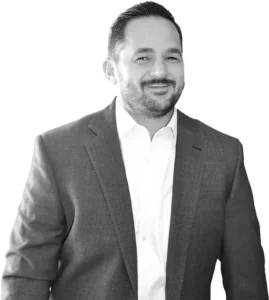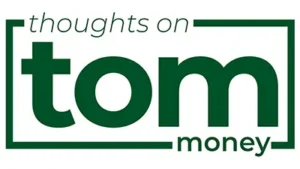There is a financial term that has been making headlines these last couple weeks and I thought it would be a suitable topic to discuss here on TOM – Stock Buybacks.
Looking over this week’s media highlights, it appears that protagonists from both sides of the political spectrum have been voicing their opinions about stock buybacks and advocating for their proposals. There is a chance that this topic might arise in your coffee shop talks throughout the week, so I thought it’d be wise to equip you with the basics on the subject.
Just for fun, I used Google Trends to see how many folks have been searching “stock buybacks,” and as I assumed, February has seen a big spike. Looking at 15 years of data, for this particular search, February 2019 has recorded the most searches and we are only a third into the month. All this to say, this is a topic people are curious about.
If you are interested in taking a deeper dive into the subject, I would recommend this piece by Michael Mauboussin: Disbursing Cash to Shareholders Frequently Asked Questions about Buybacks and Dividends. Professor Mauboussin has been an adjunct professor of finance at Columbia Business School since 1993 and published this particular piece in 2013.
“Share buybacks and dividends are two methods to return cash to shareholders. Executives view the two very differently and are often unsure of the best way to proceed. Superficial media coverage and wide-ranging input from investors contributes to this confusion.” – Mauboussin
I hope we can help you navigate some of the “superficial media coverage” in today’s issue of TOM and off we go…
Capital Allocation
Let’s start simple. Businesses are in business to make money, so how do they do that? They create a product or service in which the associated costs (expenses) are less than the total sales (revenue). Pretty basic, right? When revenue exceeds expenses, then inevitably we are going to have some leftovers. In the world of business, we call these leftovers net profit or net earnings or net income or the bottom line, because it is found on the bottom line of the income statement.
So, what can a company do with these leftovers? This is a capital allocation decision. The CEO and a company’s leadership team are responsible for allocating these excess earnings to the most suitable and efficient use. Shareholders expect this, they expect the CEO to be a fiduciary and make decisions that are in the best interest of shareholders.
There are five basic options that a business operator has regarding allocating their cash:
- Pay down debt
- Make an acquisition
- Reinvest back into the business
- Pay a dividend
- Buyback shares
Two of these options are forms of returning cash to shareholders: Dividends and Buybacks.
What’s the difference?
Let’s start by answering this question first – why would a company be interested in returning cash to shareholders? Professor Mauboussin answers this question very succinctly in his whitepaper, “A company should retain its earnings if it can earn a rate of return that is above the cost of capital. But if shareholders can earn a higher rate of return on capital than the company can, the company should disburse the cash.” His research goes on to emphasize this point, stating, “…managers who have excess cash will invest it in negative net present value projects. By disbursing cash, companies buying back their shares reduce the risk of doing something foolish with the funds.”
Essentially, returning cash to shareholders is the right decision when you don’t have a prudent alternative to allocate this capital to.
So, what’s the difference between paying a dividend and buying back shares? The simplest answer is this, a dividend is a cash payment to shareholders while buying back shares reduces outstanding shares, which could lead to an increase in share value. I say this could lead to an increase because it depends on whether or not the share price is undervalued or overvalued. If cash is used to buy back shares that are overvalued then the result will be negative for the shareholder, if shares are undervalued then the result will be positive. The art of identifying what the intrinsic value of a stock is, undervalued vs. overvalued, is a whole other conversation, but I digress. A dividend gives the shareholder the freedom to allocate their cash payment as they please, while a buyback is allocated on behalf of the shareholder back into the company.
Attitude is Everything
Mauboussin states, “The most fundamental difference between buybacks and dividends may be the attitude of executives.” Here’s what he means, companies that have a long track record of paying dividends see the value in the signaling that a growing dividend projects to shareholders – it instills confidence. It says that the company believes that it can sustain these cash payments and the leadership team will work hard to protect against ever cutting this dividend. Remember, growing dividends should relate to growing earnings, which have a high correlation with stock price appreciation. On the other hand, a dividend cut would project the opposite – concern and uncertainty amongst shareholders.
If you take a look at dividends historically, they are much more stable than buybacks. The above reasoning provides part of the story, but it also important to understand how companies approach buyback decisions. Many companies are inconsistent with their buyback strategies and have a tendency to buy during times of excess and not during times of scarcity. Much like a retail investor where buying begets more buying and selling begets more selling. The financial crisis provides a good example of the differing volatility between dividends and buybacks. From 2007 to 2009 dividends from the S&P 500 fell by 20%, while buybacks fell by more than 75%.
Dividends seem to be more systematic, while buybacks seem to be more emotionally driven. I think of the friend who gets a big tax return that they may or may not have expected. What do they typically do with that money? Do they spend it as they would their normal salary? No, they buy that big screen TV they’ve been looking at or the boat they’ve been dreaming of. Or the friend who hits an unexpected lucky streak gambling and justifies their proceeding foolish bets with the comment that they are “playing with house money.”
So, Where’s the Controversy?
Maybe you’ve gotten this far, and you are wondering what all the political hoopla regarding buybacks is all about? Good question. I can’t say that I understand all the reasoning that spurred the recent backlash, but let’s address a few of them so that you can consider yourself well informed. I’m intentionally going to stay away from some of the points that are a bit too politically deep for TOM, but we will tackle a few that are more investment related.
“Buybacks offer preferential tax treatment.” As we mentioned earlier, dividends pay cash to shareholders and buybacks are a transaction that takes place on the companies balance sheet. This means that the cash received by shareholders via a dividend is considered income and in a non-tax-free or non-tax-deferred account, this income is taxable. The tax treatment will depend on the type of dividend, qualified vs. ordinary.
Buybacks, on the other hand, do not create a taxable event. The company repurchases the shares and the value is reflected in the growth of the stock price. If an investor does nothing, this growth is considered an unrealized gain and these taxes can be deferred perpetually. This deferment can sometimes be eliminated via inheritance or often can be strategized to create preferential tax treatment around when these gains are realized. Some politicians think that these varying tax treatments is not justifiable, and policies should be initiated to rectify this disparity.
“Companies buybacks are at the expense of employees wages.” This one is a bit more rooted in political finger-pointing, but the argument states that these “leftovers” that we discussed earlier (net profits) should be allocated to wages rather than buybacks. This argument probably oversteps the boundaries of what a free market is all about, but I think David Bahnsen’s comments from last week’s Dividend Café are much more eloquent than my own,
“Is the bill from Bernie Sanders and Chuck Schumer seeking to ban companies from buying back their own stock a threat to investors? No, for the simple reason that it is going nowhere, and they know it. I, of course, am a dividend growth investor, and have no particular reason to defend stock buybacks, other than that I am an anti-statism, anti-totalitarianism American, who believes companies retain control over their own assets and the disposition thereof. And of course, investors, employees, vendors, and such all retain their freedom as well. Rational actors pursue the optimal allocation of capital. Period.” David L. Bahnsen
“Buybacks are a form of financial engineering used to benefit the CEO, not the shareholder.” Understanding the intricacies of corporate accounting is not an easy task, but this argument revolves around the fact that many CEO’s are compensated according to EPS (Earnings Per Share) and buybacks could potentially manipulate EPS. Essentially, reducing share count creates a smaller divisor (shares) and could result in higher EPS. The calculation really isn’t that simple, but that is the premise of the argument. The paper referenced in the intro highlights this potential conflict of interesting sitting, “When surveyed, three-fourths of CFOs cite increasing EPS as an important or very important factor in the decision to buy back shares. Two-thirds of CFOs say that offsetting the dilution from option or other stock-based programs is important.”And concluding, “there may be a case where buying back overvalued stock boosts EPS and helps management reach a financial objective that prompts a bonus. In this case, the motivation is impure because management’s proper goal is to allocate capital in an economically sound fashion for shareholders.”
So, does this argument have merit? Yes, but it’s often stretched and contorted when presented by certain accusers. Really, this is not so much a problem with buybacks, but more so a highlight of poor compensation structures established by the board of directors. The board should be the participating party that creates incentives that align the interest of the leadership team and the shareholders.
In Conclusion…
Now, as I mentioned earlier, those are just a handful of the arguments that come to play. There are others, some more obscure others more nuanced, but this gives you a general feel for the controversy at hand. Like most things in life, it’s not often the object itself that is evil, but the perversions at play.
I hope you feel more informed and equipped to participate in friendly conversations with your peers about buybacks 😊
Until next week, this is TOM signing off…







